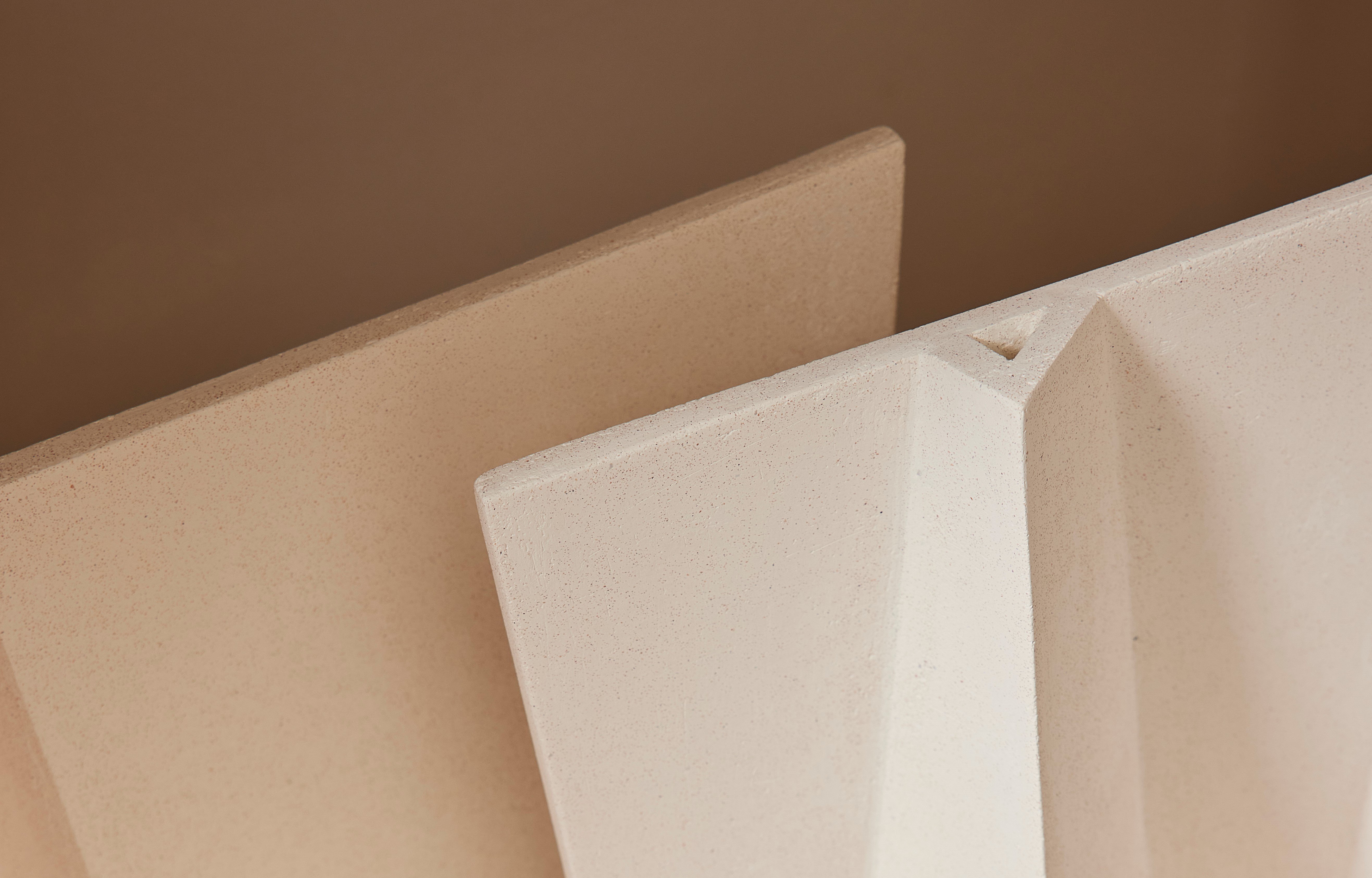
Angela Hayes creates ceramic sculptures from her inner-city studio in Melbourne. With a background in both Fine Art and Landscape Architecture, Hayes explores urban landscapes through the ceramic medium. In her Vitrine Gallery exhibition Severance Hayes has created a ceramic installation that presents landscape of division and control exploring human made systems that sever the dynamism of natural patterns.
After the install of her show, we chatted to Angela to get to know her practice a little more.
Having studied Fine Art before pursuing a career in landscape architecture and finally returning to ceramic practice – how do you find each practice has influenced the other over the years?
On the first day of art college the lecturer told us that we would never view the world the same way after. A grandiose claim but true. I learned to see in pattern, colour, tone, texture, and from all perspectives. I was also taught to interrogate creatively. My focus was on installations of sculptural ceramics in spaces. At the time, these reflected my own inward observations.
Landscape architecture was a natural progression. It posed broader questions of space. I came to understand the importance of place and how to direct others’ experiences through the landscape. A visual art background supported unlimited and creative solutions to project challenges. The palette consisted of landscape elements which could be used to move the viewer through the art piece.
I came to my current ceramic practice with honed visual expression, a design eye for programming experiences, in addition to an accumulation of practical tools. My work is now informed by both intimate and broader landscapes.

Can you tell us about the techniques and material processes behind this body of work?
I continue to develop techniques and processes that achieve my aim for precision, a straight edge, and a flat surface. This is a challenge with the clay medium and with kiln firing. From hand drawings, I will develop sculptural forms in Cad and 3D computer programs. I produce plans and patterns to cut slabs that assemble accurately. I also use these programs to simulate exhibition displays. I use paperclay for versatility, strength, and variable tones. I may adjust the clay by adding fiber for strength, different clays for different tones or grogs to texture. Earthenware, low stoneware and single firing are used to reduce misshaping and cracking of the forms in the kiln and retain body colour. As in the Vitrine exhibition, I often focus on the form and maintain the pure clay body without glaze. At other times, I take to the straight surface expressively as if it were a canvas. It depends on my project intent.
You mention that your ceramic forms originate from the study of the classic pouring vessel. What drew you to the pouring vessel as an object and do you find it still informs your making today?
The vessel is pervasive in the tradition of ceramics and an essential artifact within the development and survival of human civilisations. This history anchors my work. I continue to apply the elements of the pouring vessel in the construction of all my sculptures and in descriptions of my work. Although abstracted, the body, the lip, the spout, the foot and the handle are components of every piece I create.


Both architecture and ceramic practices navigate the eternal battle between function and form – how do you approach this challenge in your work?
Form-follows-function is the enduring adage learned in first year architecture school and assumed in the world of ceramics – and rightly so. But it is way more exciting to push the form and watch a new function follow.
What’s next for you?
Much! Large scale architectural wall cladding design, production, and installation. Porcelain slip casting. I will be forever seeking the perfect white, the perfect black, the perfect clear, a spectrum of colors and the perfect palette of clay bodies. More exhibitions and collaborations!
Severance is on show in the Vitrine Gallery from November 8, 2022, 10:00 AM — December, 2022, 4:00 PM
Interview by Anni Hagberg.
Photography by Henry Trumble.